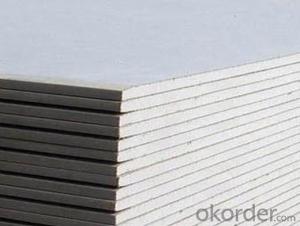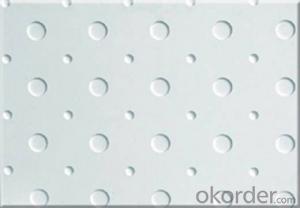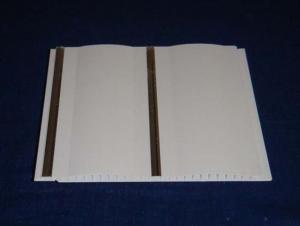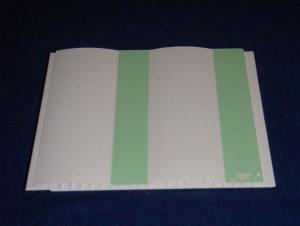Aluminum Plate Panels
Aluminum Plate Panels Related Searches
Best Inverter For Solar Panels Inverter Box For Solar Panels Inverter For Solar Panels Cost Fiberglass Panels For Roofing Foam Panels For Building Wall Lights For Bedrooms Geogrid For Retaining Wall Tar Paper For Roofing Wall Spotlight With Plug Woven Steel Mesh PanelsHot Searches
Steel Mesh Panels For Sale Price For Stainless Steel Scrap Scrap Price For Stainless Steel Price For Stainless Steel Stainless Steel Tank For Sale Cheap High Tea Sets For Sale Stainless Steel Tanks For Sale Stainless Steel For Sale High Density Fiberboard For Sale Solar Hot Water Collectors For Sale Scaffolding For Sale In Uae Scaffolding For Sale In Ireland Scaffolding For Sale In Houston Type Of Inverter For Solar Price Of Shipping Containers For Sale Types Of Inverter For Solar Stock Price For Aluminum Used Solar Inverter For Sale Portable Led Signs For Sale Steel Mesh Panels For SaleAluminum Plate Panels Supplier & Manufacturer from China
Okorder.com is a professional Aluminum Plate Panels supplier & manufacturer, offers integrated one-stop services including real-time quoting and online cargo tracking. We are funded by CNBM Group, a Fortune 500 enterprise and the largest Aluminum Plate Panels firm in China.Hot Products
FAQ
- Yes, aluminum sheets can be used for curtain walls. Aluminum is a popular choice for curtain wall systems due to its lightweight nature, durability, and corrosion resistance. Aluminum sheets can be easily formed into various shapes and sizes, making them suitable for creating the structural frame of curtain walls. Additionally, aluminum can be coated or anodized to enhance its aesthetic appeal and provide additional protection against weather elements. This makes aluminum sheets a versatile and practical material for constructing curtain walls in commercial and residential buildings.
- why can aluminum sheet after oxide film removal react quicker with hydrochloric acid?
- the reason is very simple, the original aluminum sheet has a layer of dense oxide film AI2O3, which has prevented the inner aluminum sheet from reacting with hydrochloric acid. but after oxide film removal, aluminum sheet will directly contact hydrochloric acid, generating H2.
- Over the years, the thermite reaction has been used for welding railroad rails, in incendiary bombs, and to ignite solid-fuel rocket motors. The reaction is given below.Fe2O3(s) + 2 Al(s) 2 Fe(l) + Al2O3(s)What masses of iron(III) oxide and aluminum must be used to produce 10.0 g iron?a) iron (III) oxideb)aluminiumc)What is the maximum mass of aluminum oxide that could be produced?
- I'm going to show my calculations anyways Fe2O3(s) + 2 Al(s) -- 2 Fe (l) + Al2O3 (s) From the equation : 1 mole of iron (III) oxide 2 moles of aluminium -- 2 moles of iron 1 mole of aluminium oxide Given that iron = 10.0 g = 10.0 g / 55.8 g per mole = 0.179 mol of iron (corr to 3 sig fig) Because the mole ratio of iron to iron (III) oxide is 2 : 1 Therefore moles of iron (III) oxide produced = 0.179 / 2 = 0.0895 mol Convert it back to grams 0.0895 x (55.8 x 2 + 16.0 x 3) = 14.3 grams (corr to 3 sig fig)' a) 14.3 grams of iron (III) oxide must be used ----- Given that iron = ...... (previously calculated) ...... = 0.179 mol of iron (corr to 3 sig fig) Because the mole ratio of iron to aluminium is 1 : 1 Therefore moles of aluminium produced = 0.179 mol Convert it back to grams 0.179 x 27.0 = 4.83 grams (corr to 3 sig fig) b) 4.83 grams of aluminium must be used ----- Given that iron = 0.179 mol Because the mole ratio of iron to aluminium oxide is 2 : 1 Therefore moles of Al2O3 produced = 0.179 / 2 = 0.0895 mol Convert it back to grams 0.0895 x (27.0 x 2 + 16.0 x 3) = 9.13 grams (corr to 3 sig fig) c) 9.13 grams of aluminium oxide is the maximum mass that could be produced P.S. The relative molecular masses used are from my textbook
- Aluminum plate thickness 1 cm, iron plate thickness 0.15 cm, area 1 square meters, thank you
- It's too difficult. Just think about it
- Yes, aluminum sheets can be an alternative to stainless steel in certain applications. Aluminum is generally lighter, more affordable, and has better thermal conductivity compared to stainless steel. However, stainless steel offers superior corrosion resistance and strength, making it more suitable for certain industries like food processing or marine environments. The choice between aluminum and stainless steel depends on the specific requirements and constraints of the project.
- Indeed, 101 aluminum sheets prove to be apt for food packaging purposes. The food packaging industry widely embraces aluminum owing to its remarkable attributes. Notably, it boasts a lightweight nature, durability, and resilience against corrosion, rendering it an ideal substance for maintaining the freshness and caliber of food products. Moreover, aluminum serves as a commendable shield against light, moisture, and oxygen, thereby prolonging the shelf life of packaged edibles. Thus, it is evident that opting for 101 aluminum sheets is a fitting decision for food packaging endeavors.
- The electrical conductivity of 101 aluminum sheets can be influenced by a range of factors including the individual thickness of each sheet, the level of purity in the aluminum, and the potential presence of impurities or alloying elements. Typically, aluminum is recognized for its relatively superior electrical conductivity when compared to other metals. Nevertheless, without specific details regarding these aforementioned factors, it becomes challenging to provide an exact measurement for the electrical conductivity of 101 aluminum sheets.
- Aluminum siding is essentially maintenence-free, extremelydurable, and is a great insulator, even better than brick. Brickleaks air through the mortar between the bricks, especially in olderhouses that need tuckpointing. My question is, do you feel sidingstill has a declasse connotation, or is it getting more acceptableas the years go on?
- Brick is certainly the most durable if taken care of properly. My second choice is aluminum siding, which is far more durable than vinyl siding any day. Vinyl is simply more affordable, which is why most home have it these days - whoever decided that aluminum siding declasses a home, is full of malarky.














































